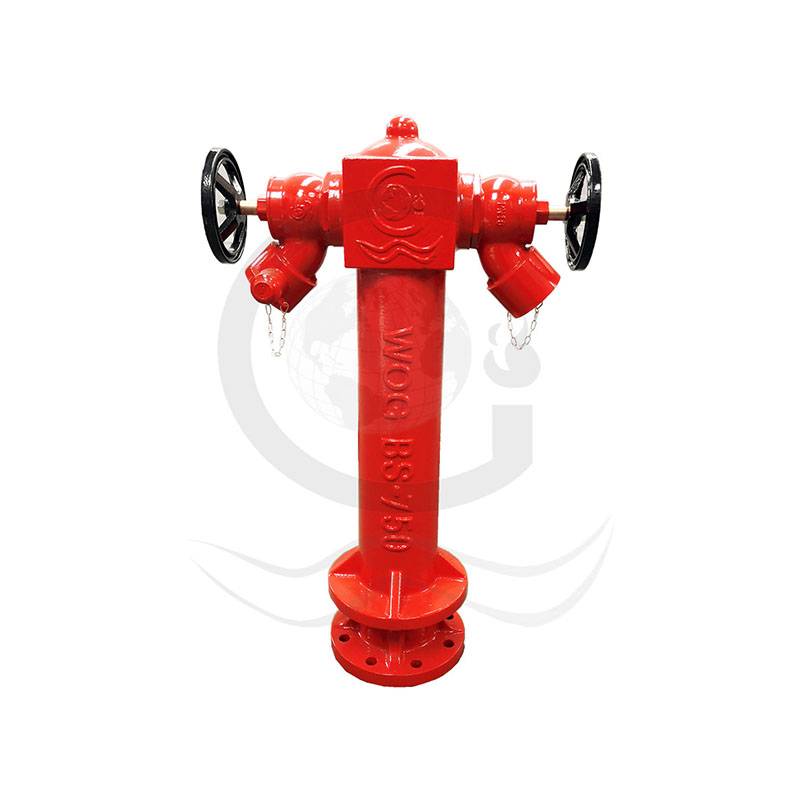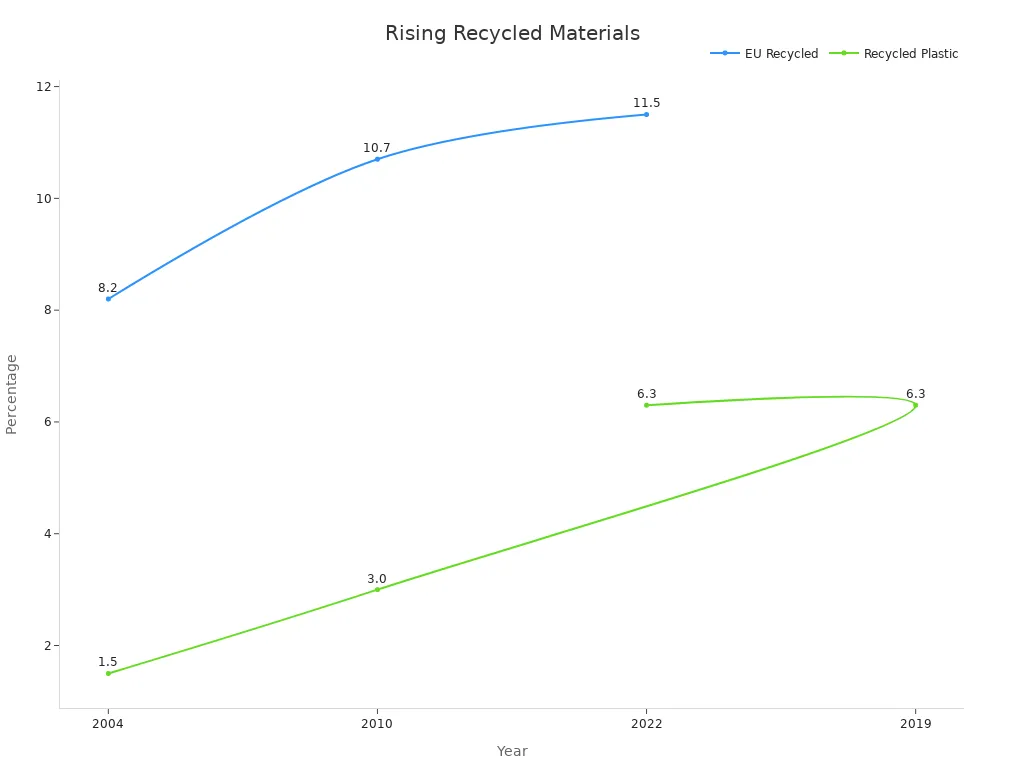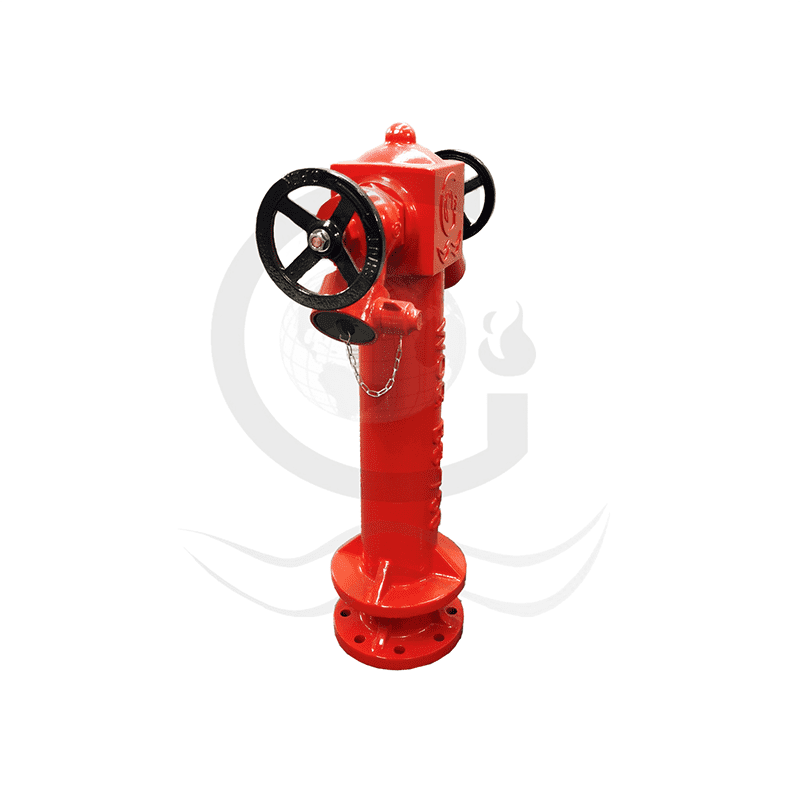
Sustainability plays a pivotal role in modern fire hydrant production. Manufacturers are under growing pressure to reduce environmental impact while delivering durable and efficient products. By embracing sustainable manufacturing practices, companies can significantly minimize waste, conserve resources, and reduce emissions. Innovations in fire hydrant valve design and the use of eco-friendly materials in fire hose reel&cabinet production highlight this transformation. These advancements not only safeguard the environment but also provide long-term economic advantages. Consequently, sustainable approaches in creating products like fire extinguisher pillar fire hydrants have become crucial for complying with regulatory standards and meeting consumer expectations.
Key Takeaways
- Green manufacturing helps the planet by using safe materials and saving energy.
- Using recycled materials in fire hydrants saves money and resources, helping reuse systems.
- New technologies, like smart tools, make work faster and cut waste.
- Following green rules and customer needs improves brand image and sales.
- Spending on eco-friendly ideas helps nature and brings lasting money benefits.
What is Sustainable Manufacturing?
Sustainable manufacturing refers to the creation of products through processes that minimize environmental harm, conserve resources, and prioritize social responsibility. This approach aligns with the growing demand for eco-friendly practices across industries, including fire hydrant production.
Principles of Sustainable Manufacturing
Sustainable manufacturing operates on several core principles:
- Resource Efficiency: Processes aim to reduce energy and material consumption.
- Waste Minimization: Manufacturers focus on reusing and recycling materials to limit landfill contributions.
- Environmental Protection: Emissions and pollutants are controlled to safeguard ecosystems.
- Social Responsibility: Companies ensure safe working conditions and fair labor practices.
Modern industries increasingly adopt these principles. For example:
- Sustainable manufacturing reduces environmental impacts and conserves energy.
- Industry 4.0 technologies, such as automation and IoT, enhance sustainability by addressing social and environmental challenges.
- Companies with strong environmental reputations often see financial benefits, including a potential 5% profit increase from reduced energy consumption, according to OECD findings.
Benefits of Sustainability in Industrial Production
Sustainability offers significant advantages for industrial production:
- Economic Gains: Reduced energy and material costs improve profitability.
- Enhanced Efficiency: Advanced technologies streamline operations and reduce waste.
- Market Competitiveness: Eco-conscious practices attract environmentally aware consumers and employees.
Case studies illustrate these benefits. For instance:
| Case Study | Problem | Solution | Result |
|---|---|---|---|
| Signify light-as-a-service | Resource waste and lack of stewardship | Product-service system (PSS) | Zero luminaire waste, reduced maintenance costs |
| Airbus additive manufacturing | Slow, costly traditional methods | Additive manufacturing for lighter parts | 465,000 metric tons of GHG emissions reduced annually |
| Tata Power solar plants | Unused rooftop space | Solar panel installation | 421 million watts produced, powering 40,000 homes annually |
Relevance to Fire Hydrant Manufacturing
Sustainable manufacturing principles directly apply to fire hydrant production. By integrating recycled materials and energy-efficient technologies, manufacturers can reduce the environmental footprint of these essential safety devices. For example, using renewable energy in production facilities can lower emissions, while adopting waste reduction practices ensures resource conservation. These efforts not only align with regulatory standards but also meet the expectations of eco-conscious consumers. As a result, fire hydrant manufacturers can enhance their market reputation while contributing to a greener future.
Challenges in Sustainable Fire Hydrant Production
Environmental Impact of Traditional Manufacturing
Traditional manufacturing processes for fire hydrants often rely on energy-intensive methods and non-renewable resources. These practices contribute significantly to greenhouse gas emissions and environmental degradation. For instance, the extraction and processing of raw materials like cast iron and steel generate substantial carbon dioxide emissions. Additionally, the use of fossil fuels to power production facilities exacerbates the industry’s carbon footprint.
Waste generation is another critical issue. Manufacturing fire hydrants involves cutting, casting, and machining metals, which produces scrap materials. Without proper recycling systems, these byproducts frequently end up in landfills, further harming the environment. Water pollution also arises from the improper disposal of industrial chemicals and wastewater, which can contaminate local ecosystems.
Regulatory and Market Pressures
Manufacturers face increasing regulatory and market pressures to adopt sustainable practices. Governments and international organizations have introduced stringent policies to reduce industrial emissions and promote eco-friendly production. For example:
- The Carbon Border Adjustment Mechanism (CBAM) requires exporters to disclose product emissions data, impacting U.S. manufacturers exporting to the EU.
- The Eco-design for Sustainable Products Regulation (ESPR) emphasizes improving product durability and energy efficiency.
- The Corporate Sustainability Due Diligence Directive (CSDDD) mandates companies to address environmental and human rights impacts across their supply chains.
- The Corporate Sustainability Reporting Directive (CSRD) imposes extensive reporting requirements on thousands of companies.
Market forces also play a significant role. Organizations like CDP and EcoVadis are pushing manufacturers to disclose sustainability data. In 2024, approximately 20,000 manufacturers are expected to receive data requests from CDP. These demands create challenges for fire hydrant manufacturers, particularly smaller firms with limited resources. High upfront costs for clean technologies and infrastructure further complicate compliance with these regulations.
Technological and Resource Limitations
Transitioning to sustainable manufacturing requires access to advanced technologies and resources, which can be a significant hurdle. Many companies struggle to adopt energy-efficient machinery or renewable energy systems due to their high initial costs. Smaller manufacturers often lack the capital to invest in these innovations, limiting their ability to reduce their environmental impact.
Supply chain management poses another challenge. Ensuring that suppliers adhere to sustainable practices is difficult, especially in regions with lax environmental regulations. Obtaining accurate emissions data from suppliers adds another layer of complexity. Furthermore, rapid advancements in clean technology make it challenging for manufacturers to keep pace, leading to outdated systems that hinder sustainability efforts.
Conflicting stakeholder interests also create obstacles. Investors may prioritize short-term profits over long-term sustainability goals, while employees and consumers demand eco-friendly practices. Balancing these competing priorities requires careful planning and negotiation.
Opportunities for Green Innovation

Advancements in Energy-Efficient Technologies
Energy-efficient technologies are transforming industrial manufacturing by reducing operational costs and environmental impact. In fire hydrant production, these advancements include the adoption of modernized machinery designed to minimize energy consumption. A recent study highlights that industries are increasingly upgrading their equipment to enhance energy efficiency, driven by rising fuel prices and supportive policy interventions. These upgrades not only conserve energy but also improve overall productivity.
For example, manufacturers are leveraging smart systems that optimize energy use during production cycles. These systems integrate sensors and automation to monitor and adjust energy consumption in real time. Such innovations align with global sustainability goals and help manufacturers comply with stricter environmental regulations. By adopting these technologies, fire hydrant producers can significantly reduce their carbon footprint while maintaining high-quality standards.
Integration of Recycled Materials
The integration of recycled materials into manufacturing processes offers a dual benefit: reducing waste and conserving natural resources. Fire hydrant manufacturers are increasingly incorporating recycled metals and plastics into their products, contributing to a circular economy. This approach not only lowers production costs but also enhances corporate social responsibility.
Industrial recycling is essential for manufacturing companies to reduce waste and promote sustainability. It offers benefits such as environmental protection, cost savings, regulatory compliance, and enhanced corporate social responsibility.
The European Union has seen a steady rise in the use of recycled materials, with the share increasing from 8.2% in 2004 to 11.5% in 2022. Similarly, the use of recycled plastic has grown from 1.5% in 1990 to 6.3% in 2019. However, there is still significant room for improvement to reduce reliance on virgin materials.

Renewable Energy in Fire Hydrant Production
Renewable energy adoption is becoming a cornerstone of sustainable manufacturing. Fire hydrant production facilities are increasingly integrating solar panels and other renewable energy sources to power their operations. This shift not only reduces greenhouse gas emissions but also ensures energy reliability during power outages.
Manufacturers are also exploring the use of solar-powered sensors in intelligent fire hydrants. These sensors enable hydrants to operate independently, reducing dependence on conventional power grids. This innovation aligns with global efforts to minimize urban carbon footprints and supports the broader transition to eco-friendly urban infrastructure.
By prioritizing renewable energy and energy-efficient technologies, fire hydrant manufacturers can meet sustainability objectives while enhancing product functionality. These efforts demonstrate the industry’s commitment to reducing environmental impact and fostering a greener future.
Strategies for Sustainable Manufacturing
Optimizing Supply Chains
Optimizing supply chains plays a critical role in achieving sustainable manufacturing. Streamlined supply chains reduce waste, improve resource efficiency, and minimize environmental impact. Companies adopting sustainable supply chain practices often experience significant cost savings and enhanced operational efficiency. For instance, research by Deloitte highlights that optimizing supply chains can lead to cost reductions of 15-20%. Similarly, McKinsey & Company reports that firms with superior supply chain capabilities achieve an average EBIT margin 7.8% higher than their competitors.
Several key performance indicators (KPIs) help measure the sustainability of supply chains:
- Total water consumed: Tracks the overall water usage in production.
- Amount of recycled water: Reflects the extent of water reuse in processes.
- Waste diverted from landfills: Indicates the efficiency of waste diversion practices.
Real-world examples further illustrate the benefits of sustainable supply chains. Unilever’s Sustainable Sourcing Program has significantly reduced greenhouse gas emissions, water use, and waste generation. Similarly, Apple’s Closed-Loop Supply Chain focuses on using recycled or renewable materials, reducing its carbon footprint through supplier collaboration. Walmart’s Project Gigaton aims to cut one billion metric tons of greenhouse gas emissions from its supply chain by 2030.
Using Eco-Friendly and Recyclable Materials
The use of eco-friendly and recyclable materials is another cornerstone of sustainable manufacturing. Incorporating these materials reduces reliance on virgin resources, lowers production costs, and minimizes waste. For example, the sustainable packaging market is projected to grow from USD 292.71 billion in 2024 to USD 423.56 billion by 2029. This growth reflects the increasing demand for environmentally responsible materials across industries.
In fire hydrant production, manufacturers are integrating recycled metals and plastics into their products. This approach not only conserves natural resources but also aligns with consumer expectations for eco-friendly solutions. A global beauty brand recently achieved a 40% reduction in packaging-related greenhouse gas emissions by prioritizing recyclable materials. Additionally, companies adopting sustainable practices often see a 15-40% reduction in plastic packaging expenses.
The benefits of using recyclable materials extend beyond cost savings. They contribute to a circular economy, where materials are continuously reused, reducing the environmental footprint of manufacturing processes. This strategy enhances corporate social responsibility and strengthens brand reputation in an increasingly eco-conscious market.
Implementing Waste Reduction Practices
Waste reduction is a fundamental aspect of sustainable manufacturing. By minimizing waste, manufacturers can lower production costs, conserve resources, and reduce environmental harm. Effective waste management practices include recycling, reusing materials, and improving production efficiency.
Empirical data underscores the impact of waste reduction strategies. For example, Advanced Composite Structures reduced scrap rates from 24% to 1.8%, while Canyon Creek Cabinet Company saved over $1.1 million by increasing production efficiency. These examples demonstrate how waste reduction not only benefits the environment but also enhances profitability.
Key metrics for evaluating waste reduction include:
- Total waste generated: Measures the overall waste output.
- Recycling rate: Indicates the percentage of waste reintegrated into production cycles.
- Waste intensity: Provides a ratio of waste generated to production output.
Manufacturers can adopt innovative technologies to further reduce waste. For instance, smart systems equipped with sensors can monitor production processes in real time, identifying inefficiencies and minimizing material loss. These advancements align with global sustainability goals and help manufacturers comply with stringent environmental regulations.
Leveraging Technology for Sustainability
Technology plays a pivotal role in advancing sustainability within the manufacturing sector. By integrating innovative tools and systems, manufacturers can optimize processes, reduce waste, and minimize energy consumption. These advancements not only address environmental concerns but also improve operational efficiency and profitability.
Smart Manufacturing Systems
Smart manufacturing systems, powered by automation and data analytics, have revolutionized industrial production. These systems enable real-time monitoring and optimization of energy use, material flow, and equipment performance. For instance, Siemens’ digital twin technology has significantly reduced waste and enhanced efficiency in electronics production. Similarly, General Electric’s Predix platform has decreased unplanned downtime by up to 20%, extending the lifespan of machinery.
Tip: Smart systems equipped with sensors can identify inefficiencies during production, allowing manufacturers to make immediate adjustments and conserve resources.
Data-Driven Energy Efficiency
Data analytics has emerged as a powerful tool for improving energy efficiency. By analyzing energy consumption patterns, manufacturers can identify areas for improvement and implement targeted solutions. The International Energy Agency highlights the potential for substantial reductions in industrial energy use through efficiency improvements. For example, BMW’s Leipzig plant achieved a remarkable 70% reduction in energy consumption per vehicle since 2006 by leveraging data-driven insights.
| Statistic/Case Study | Description |
|---|---|
| Global Emissions Contribution | Manufacturing accounts for approximately 20% of global emissions (World Economic Forum). |
| Energy Efficiency Potential | Significant reductions in industrial energy use are possible through efficiency improvements (IEA). |
| BMW Leipzig Plant | Achieved a 70% reduction in energy consumption per vehicle since 2006 through data analysis. |
Digital Supply Chain Optimization
Digital technologies have transformed supply chain management, making it more transparent and efficient. Platforms like Schneider Electric’s EcoStruxure provide real-time visibility into logistics operations, enabling companies to cut costs and reduce emissions. Schneider Electric reported a 20% reduction in logistics costs by improving supply chain visibility. These advancements ensure that resources are utilized effectively, minimizing waste and environmental impact.
Predictive Maintenance and Resource Management
Predictive maintenance technologies use machine learning and IoT sensors to monitor equipment health and predict failures before they occur. This approach reduces downtime, extends equipment life, and conserves resources. ABB’s Ability™ system, for example, provides insights into energy consumption patterns, helping manufacturers optimize resource utilization. By adopting such technologies, fire hydrant manufacturers can enhance production efficiency while reducing their environmental footprint.
Note: Predictive maintenance not only lowers operational costs but also supports sustainability by reducing the need for frequent equipment replacements.
The Path Forward
Leveraging technology for sustainability offers immense potential for the fire hydrant manufacturing industry. By adopting smart systems, data-driven energy solutions, and predictive maintenance tools, manufacturers can align with global sustainability goals while maintaining competitive advantages. These innovations demonstrate that technology is not just a tool for efficiency but a cornerstone for building a greener future.
Benefits of Sustainable Practices in Fire Hydrant Production

Cost Efficiency and Resource Conservation
Sustainable manufacturing practices significantly enhance cost efficiency and resource conservation. By adopting cleaner production technologies and integrating recycled materials, manufacturers reduce reliance on expensive raw materials and energy-intensive processes. For example, green finance initiatives have supported the adoption of eco-friendly technologies, leading to improved resource allocation and economic benefits. The table below highlights findings from recent studies on the impact of green finance on cost efficiency and resource conservation:
| Study | Findings | Impact on Cost Efficiency and Resource Conservation |
|---|---|---|
| Ye et al. (2022) | Green finance supports environmental projects. | Enhanced resource efficiency through financial backing. |
| Deng et al. (2023) | Policies improve resource allocation efficiency. | Promoted sustainable development and reduced resource waste. |
| Ning et al. (2023) | Green finance benefits enterprises economically and environmentally. | Improved market competitiveness and resource conservation. |
| Li et al. (2023) | Cleaner production technologies reduce environmental costs. | Encouraged adoption of sustainable practices, conserving resources. |
| Jiang et al. (2022) | Green credit policies improve sustainability in high-pollution sectors. | Reduced carbon emissions and minimized resource waste. |
These practices not only lower operational costs but also ensure long-term resource availability, making them essential for industries like fire hydrant production.
Reduced Environmental Footprint
Sustainable practices play a crucial role in reducing the environmental footprint of manufacturing operations. By minimizing energy consumption, emissions, and waste generation, companies contribute to a healthier planet. Key metrics for measuring environmental impact include energy usage, carbon footprint, and waste generation. The table below outlines these metrics:
| Metric | Description | Measurement Unit |
|---|---|---|
| Energy Consumption | Total energy used in operations. | kilowatt-hours (kWh) |
| Carbon Footprint | Emissions from electricity, gas, and water usage. | CO2 equivalents |
| Transportation Emissions | Emissions from company vehicles and employee commuting. | CO2 equivalents |
| Waste Generation | Amount and type of waste produced. | kilograms (kg) |
| Paper Usage | Amount of paper consumed in operations. | reams |
Fire hydrant manufacturers adopting renewable energy sources and waste reduction strategies can significantly lower their carbon emissions. These efforts align with global sustainability goals and demonstrate a commitment to environmental stewardship.
Enhanced Brand Reputation
Sustainable manufacturing enhances brand reputation by aligning with consumer and investor expectations. Research shows that companies incorporating eco-friendly practices into their Corporate Social Responsibility (CSR) strategies experience improved public perception. Consumers increasingly prefer products from environmentally responsible brands, while investors prioritize businesses with strong sustainability credentials. This shift not only strengthens market positioning but also fosters customer loyalty.
For fire hydrant manufacturers, adopting sustainable practices signals a commitment to safety and environmental responsibility. This dual focus enhances trust among stakeholders and positions the company as a leader in the green industry. By meeting these expectations, manufacturers gain a competitive edge in an increasingly eco-conscious market.
Meeting Consumer and Regulatory Expectations
Sustainable manufacturing practices align closely with the expectations of both consumers and regulatory authorities. Companies adopting these practices not only address environmental concerns but also gain significant economic and reputational advantages.
Consumers increasingly prioritize sustainability when making purchasing decisions. A 2023 survey revealed that 46% of consumers purchased at least one sustainable product or service. Many are willing to pay an average premium of 27% for products made using eco-friendly methods or materials. Additionally, 61% of consumers in 2021 expressed a preference for sustainable goods, with 40% associating sustainability with social responsibility. These trends highlight the growing demand for products that reflect ethical and environmentally conscious production.
Regulatory bodies also play a critical role in shaping manufacturing practices. Policies such as the Corporate Sustainability Reporting Directive (CSRD) and the Carbon Border Adjustment Mechanism (CBAM) require companies to disclose emissions data and adopt sustainable methods. By meeting these requirements, manufacturers can reduce compliance costs and avoid penalties. Sustainable practices also simplify adherence to evolving regulations, ensuring long-term operational stability.
The benefits of sustainable manufacturing extend beyond compliance and consumer satisfaction. The table below outlines key advantages:
| Key Benefits from Sustainable Manufacturing | Description |
|---|---|
| Lower Resource and Production Costs | Companies reduce costs by minimizing waste and improving efficiency. |
| Lower Regulatory Compliance Costs | Sustainable practices lead to easier compliance with regulations. |
| Improved Sales and Brand Recognition | Eco-friendly practices enhance brand image and attract customers. |
| Greater Access to Financing and Capital | Sustainable businesses secure funding more easily. |
| Easier Employee Hiring and Retention | Strong sustainability practices attract and retain top talent. |
Manufacturers who embrace sustainability not only meet consumer and regulatory expectations but also position themselves as leaders in their industries. By addressing environmental and social concerns, they build trust with stakeholders and ensure long-term success.
Sustainability in fire hydrant production has become a cornerstone of modern manufacturing. By adopting eco-friendly materials and energy-efficient methods, manufacturers reduce waste and conserve resources. These practices not only lower costs but also enhance environmental stewardship.
- The industry is shifting toward greener solutions, such as hydrants made from recycled materials and advanced coatings that cut carbon footprints by up to 30%.
- Innovations in production methods promise long-term benefits, including significant energy savings and reduced environmental impact.
This forward momentum positions fire hydrant manufacturers as leaders in sustainable urban infrastructure, paving the way for a greener future.
Post time: Apr-27-2025

